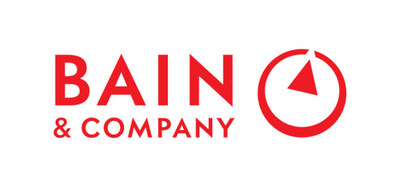Protection gaps expected to worsen across all lines of insurance business through 2030, finds Bain & Company
- Uncertainty around long-term earnings sustainability, emerging risks, and affordability / access present new challenges for insurers
- AI-driven industry improvements could allow revenue growth of 10-15%, operating expense savings of up to 30%, and reductions in P&C claims leakage of 30-50%
BOSTON, March 31, 2025 /PRNewswire/ -- Protection gaps are expected to worsen across all lines of the insurance business through 2030 as insurers worldwide contend with rate-driven growth that is unsustainable, according to new research released today by Bain & Company.
Bain's report, Bridging the Protection Gap: Affordability, Access, and Risk Prevention, shows the challenges facing the insurance industry in matching price-to-risk profitably. This is in part due to changing risks such as the rise in natural disasters and cyberattacks, unaffordable property premiums, and the declining relevance of life insurance— especially among younger generations. Only one-quarter to one-third of the damage from natural disasters will be covered by insurance by 2030; for mortality, it could be less than half, Bain found.
"Bolstered by unsustainable tailwinds, insurance companies find themselves at an inflection point," said Sean O'Neill, head of Bain's global Insurance practice. "Over the past couple of years, we've seen rate increases in the property and casualty sector and interest-rate–driven annuity sales in the life sector. While capital and balance sheets remain reasonably strong, several challenges have emerged, and profitability has come under pressure for many lines of the insurance business. Insurers will need to be proactive and act now if they wish to navigate these impacts."
Investors are skeptical of many insurers' future earnings growth potential
Investors are skeptical about US insurers' prospects for future growth but are more bullish on life insurers in emerging markets, Bain's report shows. Valuations of US life players include negative "white space" from long-term earnings growth, suggesting either declining profitability or hidden losses yet to emerge from today's in-force blocks. P&C insurers face the same problem, albeit on a smaller scale, due to concerns around the sustainability of recent price increases alongside potentially increasing claims.
Threat of emerging cyber risks spur demand for coverage
Another challenge facing insurers worldwide is the threat of rapidly increasing cyber risks in a much more digitally enabled and data-rich world. Costs from global ransomware damage are expected to climb to more than $250 billion within the next six years, and actions by individual carriers will not be sufficient to address future risks, Bain warns.
"Throughout the insurance sector, risk prevention is an increasingly critical component of strategy," said Andrew Schwedel, partner in Bain's Insurance practice. "Risks for catastrophic cyber events will need to be shared, and public-private partnerships will need to expand to promote prevention. Risk-sharing will also likely require additional capacity from excess and surplus carriers, reinsurers, and alternative capital providers."
Rise of AI, rapid proliferation of unstructured data reshaping insurance landscape
Despite several challenges, insurers are also facing a rich set of opportunities, including recent technology advancements. The rapid proliferation of unstructured data and the rise of AI are reshaping the industry landscape, Bain found. Harnessing data presents insurers with a unique opportunity to enhance affordability and access. Bain anticipates that AI-driven industry improvements will allow insurers to realize a 10%–15% revenue uplift, up to 30% operating expense savings, and a 30%–50% reduction in P&C leakage (losses due to errors, inefficiencies, or fraud in claims handling).
Other topics covered in the report include how the growth of the climate solutions market is expected to impact insurance risk models, why the rise of electric and autonomous vehicles will transform the dynamics of risk and liability, and how to deal with the growing retirement income gap.
Media contacts
To arrange an interview or for any questions, please contact:
Dan Pinkney (Boston) — Email: dan.pinkney@bain.com
Gary Duncan (London) — Email: gary.duncan@bain.com
Ann Lee (Singapore) — Email: ann.lee@bain.com
About Bain & Company
Bain & Company is a global consultancy that helps the world's most ambitious change makers define the future.
Across 65 cities in 40 countries, we work alongside our clients as one team with a shared ambition to achieve extraordinary results, outperform the competition, and redefine industries. We complement our tailored, integrated expertise with a vibrant ecosystem of digital innovators to deliver better, faster, and more enduring outcomes. Our 10-year commitment to invest more than $1 billion in pro bono services brings our talent, expertise, and insight to organizations tackling today's urgent challenges in education, racial equity, social justice, economic development, and the environment. We earned a platinum rating from EcoVadis, the leading platform for environmental, social, and ethical performance ratings for global supply chains, putting us in the top 1% of all companies. Since our founding in 1973, we have measured our success by the success of our clients, and we proudly maintain the highest level of client advocacy in the industry.
![]() View original content to download multimedia:https://www.prnewswire.com/news-releases/protection-gaps-expected-to-worsen-across-all-lines-of-insurance-business-through-2030-finds-bain--company-302414602.html
View original content to download multimedia:https://www.prnewswire.com/news-releases/protection-gaps-expected-to-worsen-across-all-lines-of-insurance-business-through-2030-finds-bain--company-302414602.html
SOURCE Bain & Company


